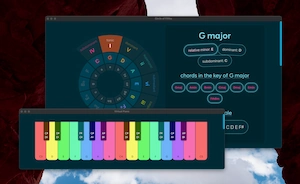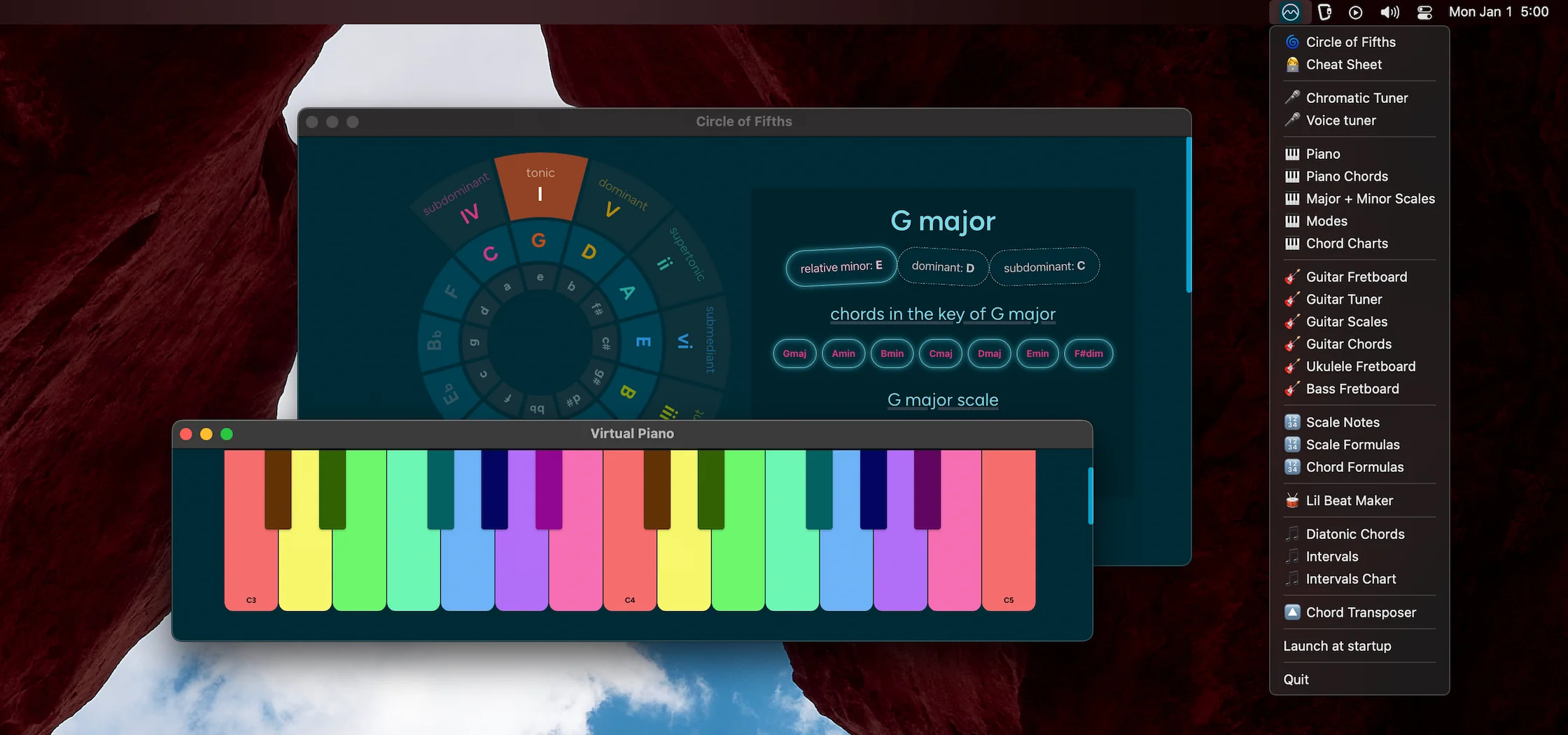Overtone Series (aka Harmonic Series) in Music
In music, the overtone series, also known as the
harmonic series, is the series of higher pitched frequencies that a resonating or vibrating
body creates naturally and which give every instrument its distinctive timbre.
This tool allows you to hear different fundamentals with their first 11
overtones (for a total of 12 harmonics, the fundamental is considered the 1st
harmonic). It also offers a rough visual simulation of a vibrating string, to
illustrate how the different overtones are created from a vibrating string.
You can change the volume of each harmonic to create interesting variations in
the final timbre produced.
More about how the harmonic series works...
First 12 Harmonics:
Fundamental:
1st Overtone: Octave
2nd Overtone: Perfect Fifth (+2 cents)
3rd Overtone: Octave
4th Overtone: Major Third (-14 cents)
5th Overtone: Perfect Fifth (+2 cents)
6th Overtone: Minor 7th (-31 cents)
7th Overtone: Octave
8th Overtone: Major 2nd (+4 cents)
9th Overtone: Major 3rd (-14 cents)
10th Overtone: Tritone (-49 cents)
11th Overtone: Perfect 5th (+2 cents)
...and on and on for infinity!
🤓 About the Harmonic Series
🦜 Any pitched sound that's not a pure sine wave will produce a series of higher pitched frequencies known as overtones. Each overtone has a frequency that's a multiple of the initial pitched sound.
👂 The initial pitched sound is called the fundamental and each successive overtone gets progressively lower in volume, so the first few overtones are the most prominent. In theory the overtone series continues into infinity, but we can only hear a certain range of overtones.
🎸 The harmonic series happens because pitched sounds are produced using air in a tube or a vibrating string and the properties are such that frequencies are multiplied successively. If we take a string as an example, say the string of a guitar, the string will vibrate as a whole, but then half the length of the string will vibrate independently, and half of the half and so on, multiplying the fundamental frequency with each halving, meaning that each vibrating half will vibrate twice as fast as the larger whole portion it vibrates from.
🎵 In music, the harmonic series is a useful concept to understand because it reenforces how intervals of octaves, fifths and thirds become primary building blocks of harmony. These intervals are the first ones seen in the harmonic series, and hence why they tend to sound consonant.
📺 This short introduction might now be enough to fully grasp what's happening under the hood, so to learn more about how the harmonic series works, I recommend this video by Walk That Bass and this video by Andrew Huang.



